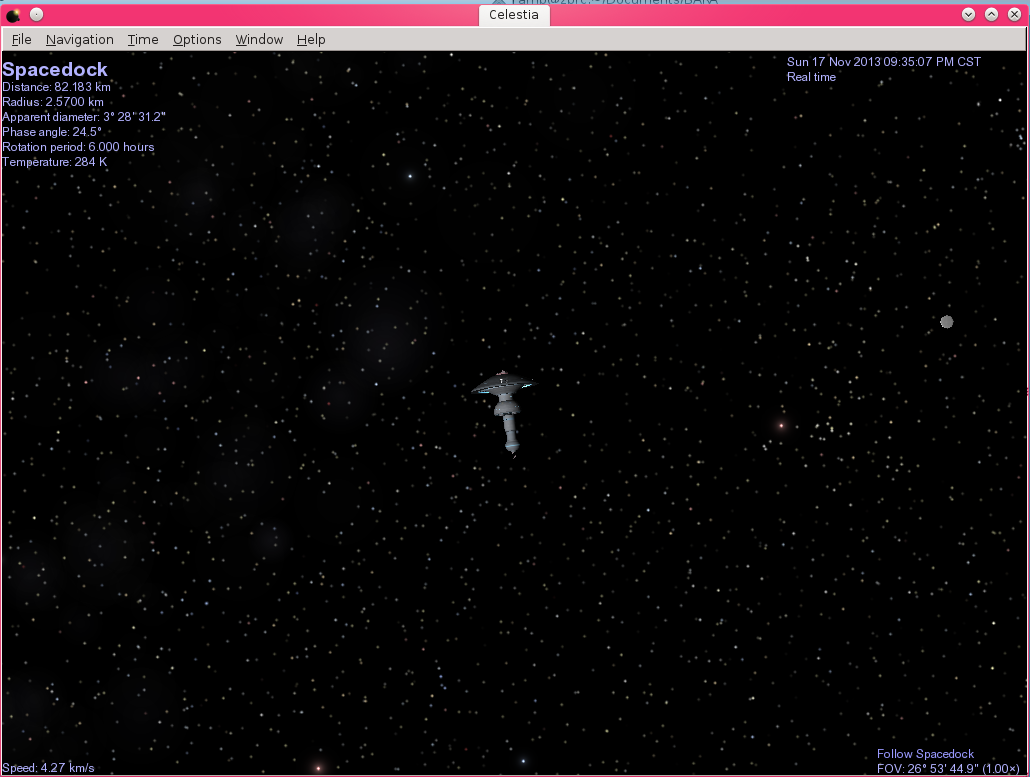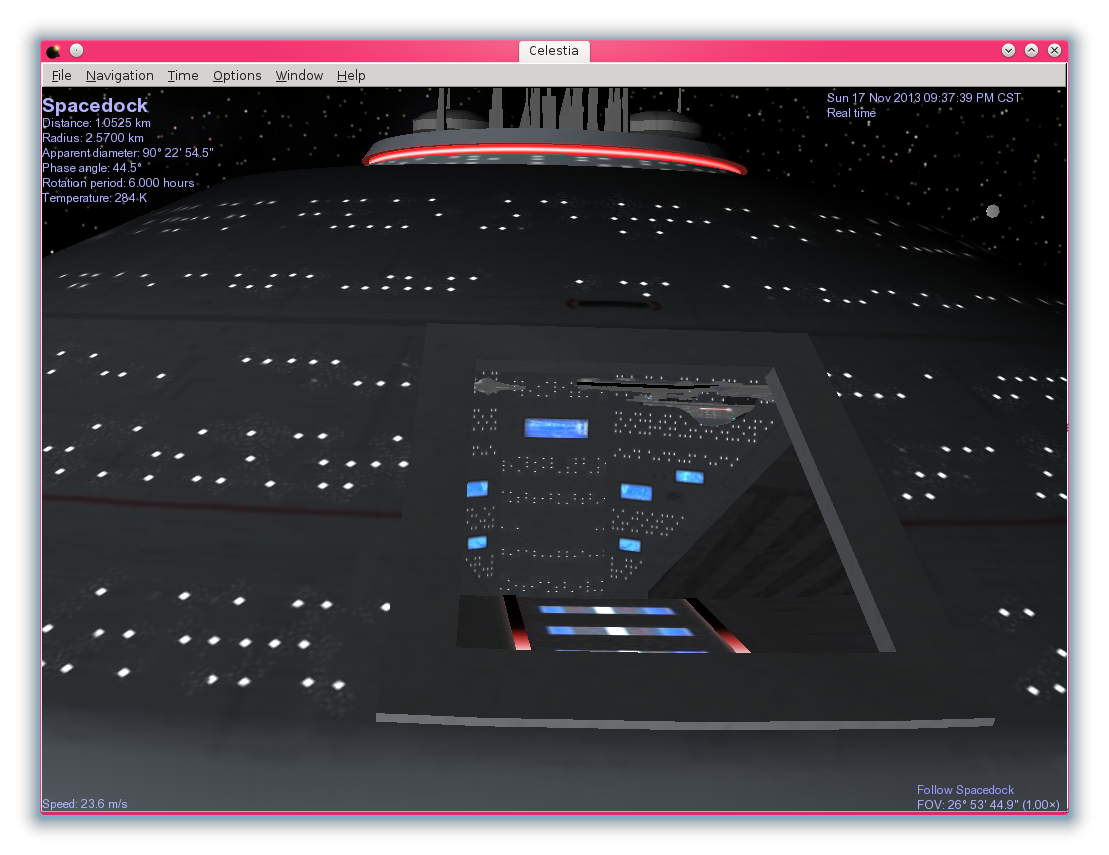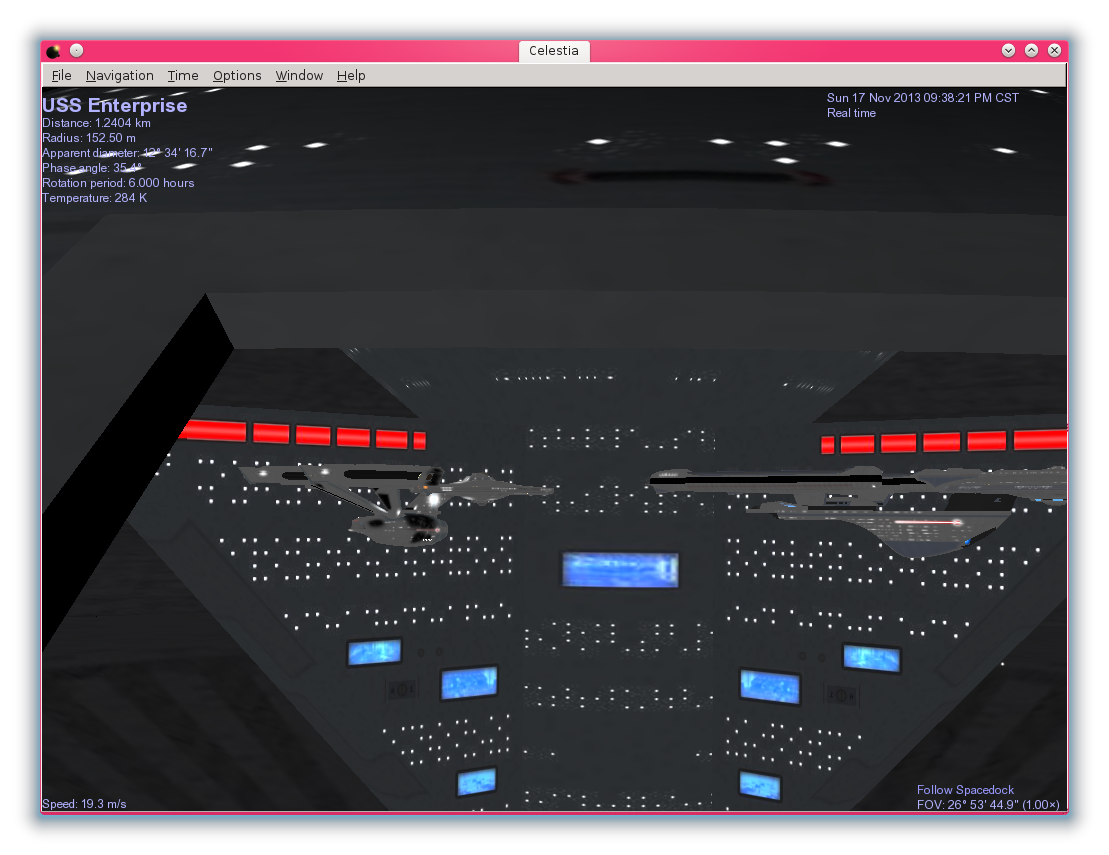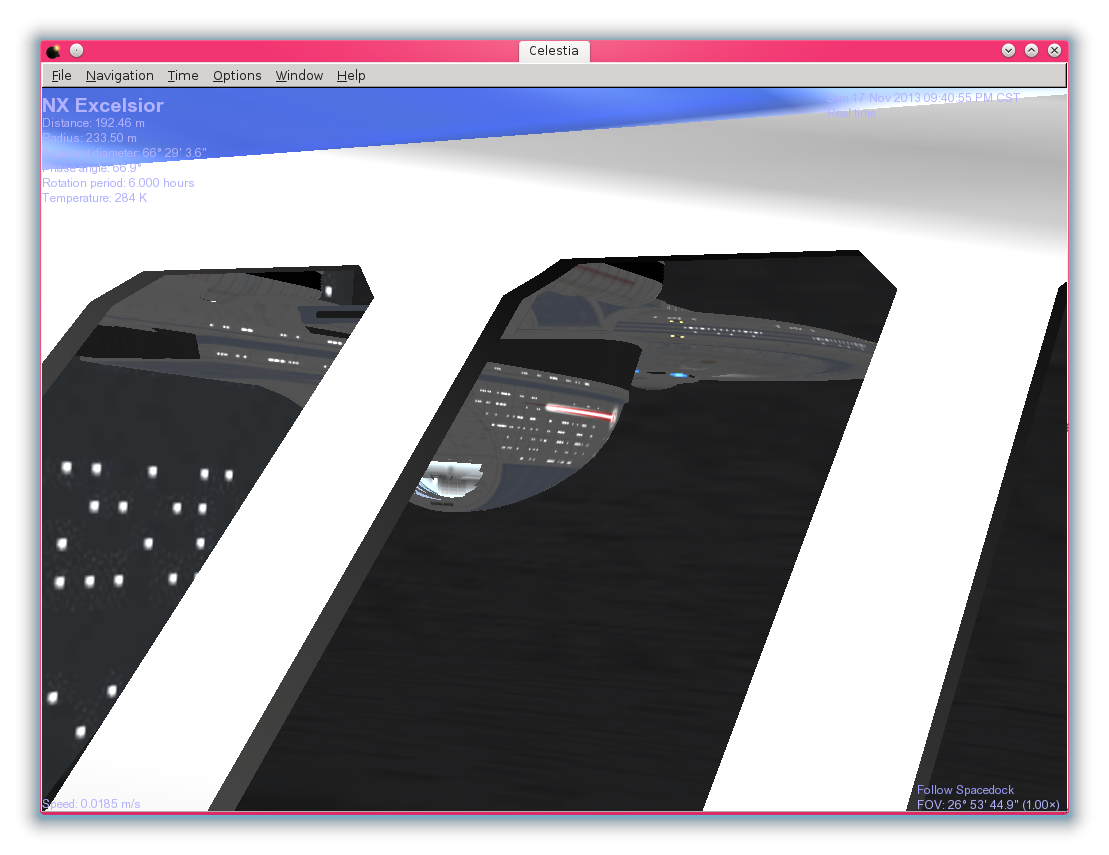Celestia is an extraordinary astronomy program that is available for free downloads for Linux, OSX, and even Windows. I call it a Universe Simulator. Here's what Wikipedia has to say about it:.
Celestia is a 3D astronomy program created by Chris Laurel. The program is based on the Hipparcos Catalogue (HIP) and allows users to travel through an extensive universe, modeled after reality, at any speed, in any direction, and at any time in history. Celestia displays and interacts with objects ranging in scale from small spacecraft to entire galaxies in three dimensions using OpenGL, from perspectives which would not be possible from a classic planetarium or other ground-based display.
Why talk about Celestia? Well, it is a really cool program that I'd recommend kids of all ages to play around with. You really don't have any idea how big space really is, until you try tooling around just the solar system and limit yourself to the speed of light when doing so.(Note: Celestia will allow you to "travel" much, much, much faster than the snail-like pace of the speed of light) Want to travel to Mars from Earth? Well, this evening(11/17/2013, if you wanted to do so, It's going to take you 14 minutes and 47 seconds to do so. Jupiter is more than 37 minutes away. Want to take a look at the Voyager I spacecraft? Well, be prepared to travel for 15 hours and 38 minutes!
There really is a point to all this, which I'll get to in just a second. I already mentioned that the Voyager spacecraft is available inside of Celestia, but not by default. You'll have to go to the Celestia Motherlode to get and install it. In addition to real spacecraft, such as Voyager, Skylab, the ISS and others, you'll find that there are fictional ones as well. In this particular case we're going to be taking a look at an Easter Egg of sorts that I found inside the SpaceDock space station from the Star Trek universe.
Let's take a look at Spacedock from a distance, shall we...

Yup. That's it. Right now we're 82 kilometers away. Let's go a little closer...
As you can see, it's a traditional Star Trek space station. This type of space dock is pretty large. When starships are in for repair, they are actually serviced inside the station, but I'm getting a little bit ahead of myself.

In order to enter the Space Dock, you must pass through the door. In this case, the door is pretty large...

Here we are, coming up on the portal to the station. You can see one of the starships in the dock pretty clearly....

Here, you see two different starships. The one on the right is the U.S.S. Excelsior, registry number NX-2000. On the right is a rather beaten up Constitution class starship familiar to many as the U.S.S. Enterprise, which carries the registry number NCC-1701. It is this ship which we will be checking out more closely.

Ah yes, here she is. She appears to have taken a bit of battle damage, but appears to be more or less in one piece.

What we're interested in is the forward observation area that you see below..

We've entered the viewing window and look back towards the Excelsior

Almost immediately to our left we see that even the Enterprise apparently has vending machines.

Finally, the object of this particular expedition. If you cruise around a bit amongst the trees and shrubbery, you'll find the object of our quest. There are apparently Gnomes infesting the Enterprise. I think someone needs to talk to the captain.
